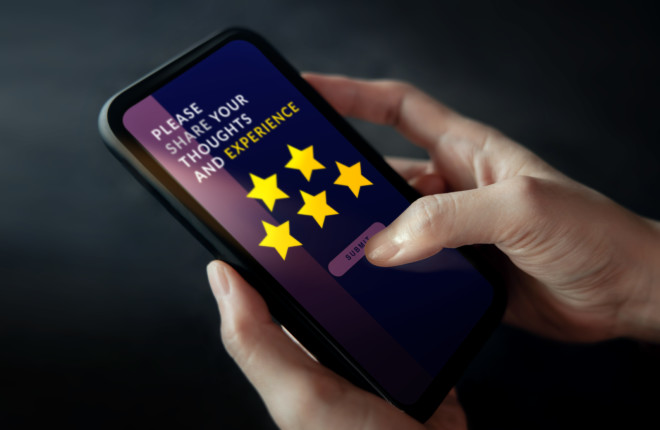Every business goes through this situation where they lose valuable clients to competitors. Some businesses focus more on generating fresh leads and adding new clients to replace the lost ones. The battle to generate new interest for a company can quickly be linked back to the struggle to keep existing customers satisfied.
Although reducing customer churn seems like a big task, it’s worth prioritizing. However, you cannot fix the problem without identifying the causes of the churn.
A Quick Look Into the Causes of Churn
Customer churn is assumed to happen due to bad customer service or cost. While customer churn is closely related to customer satisfaction, the reality isn’t that straightforward. There are different subsets of customer satisfaction that come into play—and that varies for each set of users.
But popular causes of churn include such items as:
- Cost Changes
- Lack of adoption
- Poor UI/UX of your product
- Lack of features considering new trends
- Competitor products
- Poor product/market fit
- Lost value perception of the app
- … And so on
The good news?
You can stop, or at least minimize, the customer churn.
7 Strategies to Reduce Customer Churn
1. Use Data Intelligence Tools
Successful businesses do two things differently. First, they make sense of the evidence they have. Second, they make systemic adjustments as soon as they realize what the evidence shows them. So, if you’ve got the data – make sure you can use it and implement any improvements required in your company to make it happen faster.
For instance, you are selling an email marketing tool. Your clients are using it and are happy with it. However, your competitor comes up with the integration of their email marketing tool with CRM so that users can export contacts directly to the email marketing tool. It can be a value-added feature and a reason to switch to a new vendor before the contract renewal. So, if your competitor can do it, you can do it too.
Data intelligence tools, like SalesIntel, help you access technographic data to identify the tools and technologies your clients (especially, with higher ticket-size) are using without bothering them. Once you know the CRM they use, work on the integration, and promote it before the contract renewal.
2. Use Machine Learning to Create Predictive Models
To develop effective customer retention strategies, you should use predictive analytics to make forecasts, look at the historical evidence, and understand what consumers might like or hate.
Machine learning uses mathematics, statistics, and probabilities to connect the dots between variables that maximize important outcomes, such as retention. These models are then used with new consumer data to make forecasts.
For example, analytics will be used to determine which up-selling or cross-selling goods would be the most relevant and valuable for your clients based on their current technological stack, past purchases, and browsing history. That’s when machine learning crunches the data to highlight top opportunities.
3. Segmentation for Retaining the Right Customers
Focus on segmentation using data analytics. You can determine how each segment interacts with your brand and product. This helps you to look at each subgroup and draw conclusions. Figure out the adoption of new contact and service tactics to maximize retention for the most desired consumers.
Analyze the firmographic data such as annual revenue, company size, location(s), and more. This way, you can identify which type of customers drive the most sales. There will be customers that might have cost too much to your business to close the deal and generate revenue. You can then prioritize your focus and where you want to target your efforts.
4. Create a Smooth On-Boarding Process
Your customer retention strategy should start right from the purchase. To ensure you get it right the first time, set up a smooth customer onboarding process. Have a roadmap to guide new consumers on the features, functionality, and process of your product or service.
Be sure that you use your onboarding tactics to attract potential clients, beginning by showing them how to use any aspect of your product. This strategy makes it easy to handle consumer demands while at the same time allowing you full control of the speed at which more detail is being provided.
Given that, the smooth customer onboarding process is not something that you can nail in the first hit. It needs a constant check for improvements. Customers who accomplish strong results with the aid of your company are less likely to quit, so you must regularly track and iterate the onboarding procedure and keep an eye out for snags.
5. Offer Incentives
Two motivation factors for employees to stick with their current company are recognition and rewards. The same is the case for customers. It is an advisable tip to offer rewards to the customers, such as discounts on upgrades or next deals, free trials, freemium offers, etc. to at-risk clients.
Offering rewards and freebies are often considered to be the most successful strategy for minimizing turnover. However, make sure that you have assessed whether giving an opportunity is advantageous to you. You need to make sure that the costs of a retention campaign do not overshadow the gains to be made by keeping certain clients.
Given that, it is crucial to identify the right clients to retain. You should not waste money on consumers with comparatively smaller profit margins. That does not mean you should let them go, but you can have a plan B for them that doesn’t need more investment.
6. Send Your Best People to Deal With Unhappy Clients
To retain your premium customers successfully, you need to call in your best sales expert from the team. If you haven’t already made a customer success team, consider building one. Find out who the brightest, most vocal, and most persuasive B2B sales reps are, and ask them to talk to your customers who have faced a bad experience and want to quit.
At this point, you can make use of their credibility and expertise in coping with tough circumstances and unhappy clients. Having dedicated customer success reps will also catch client issues before they become serious.
7. Offer long term contracts
Finally, think about proposing an extended commitment to serve your customer. Suggest your customers sign an extended contract in exchange for locking at a favorable price.
Sounds hard or imposing? Here’s the logic.
When a customer tries something for the first time, they are hesitant about how it will work and if it will deliver the expected ROI, and so on. But, you need to give a considerable amount of time to let anything deliver the promised outcome.
Instead of the month-to-month contracts, try offering a longer annual (or two-year) subscription model. Users will have time to use the full features of your product and see the ROI. Expecting miracles to happen in the first month will be unrealistic. Annual contracts will allow your customers enough time to implement the product and see the benefits of using it. And once they see the rewards, they will be more willing to commit to your product.
Conclusion
Now that you know that you have a reason and strategies to retain your valuable customers, why lose them to your competitors? Make your customers realize why it’s best to stick with you.
Be proactive in preventing client turnover from the start. Track the changes happening on your client’s end. Try to collect all possible data points that can help you gain insights into your clients as well as your prospects’ technical stack, annual revenue, new locations, what type of content they are browsing on the internet, and other data points.
SalesIntel helps you to stay up-to-date with technographic data, firmographic data, and buyer intent data all in one place to help your customer success team keep everyone happy.






